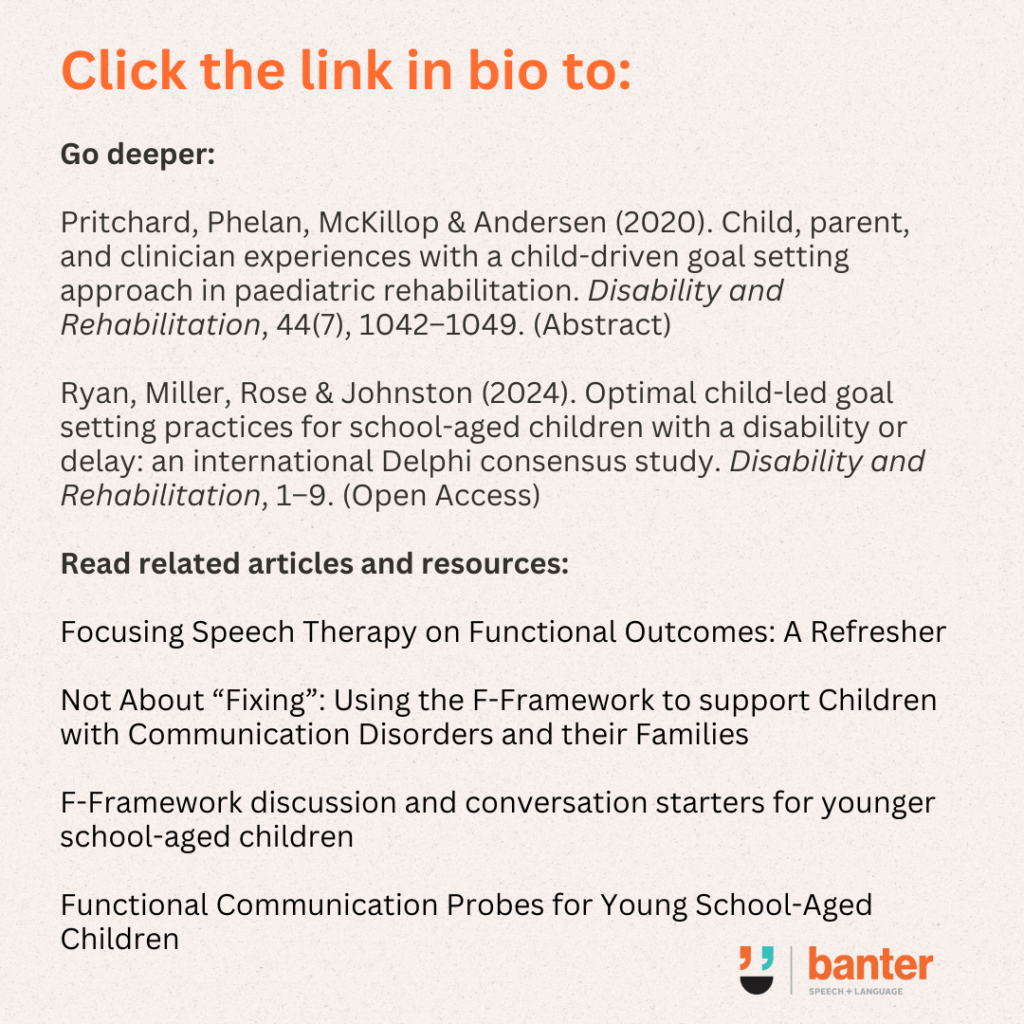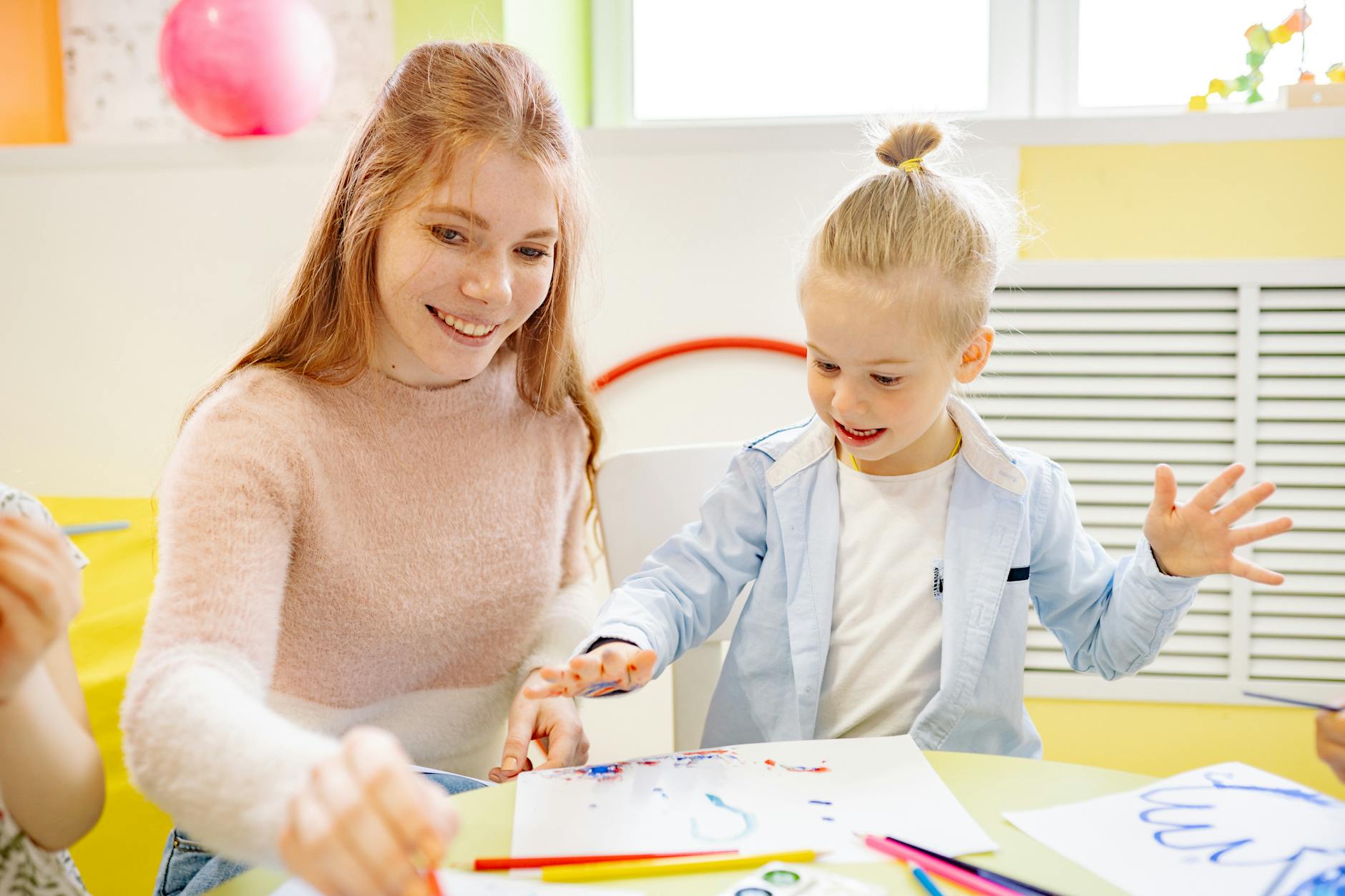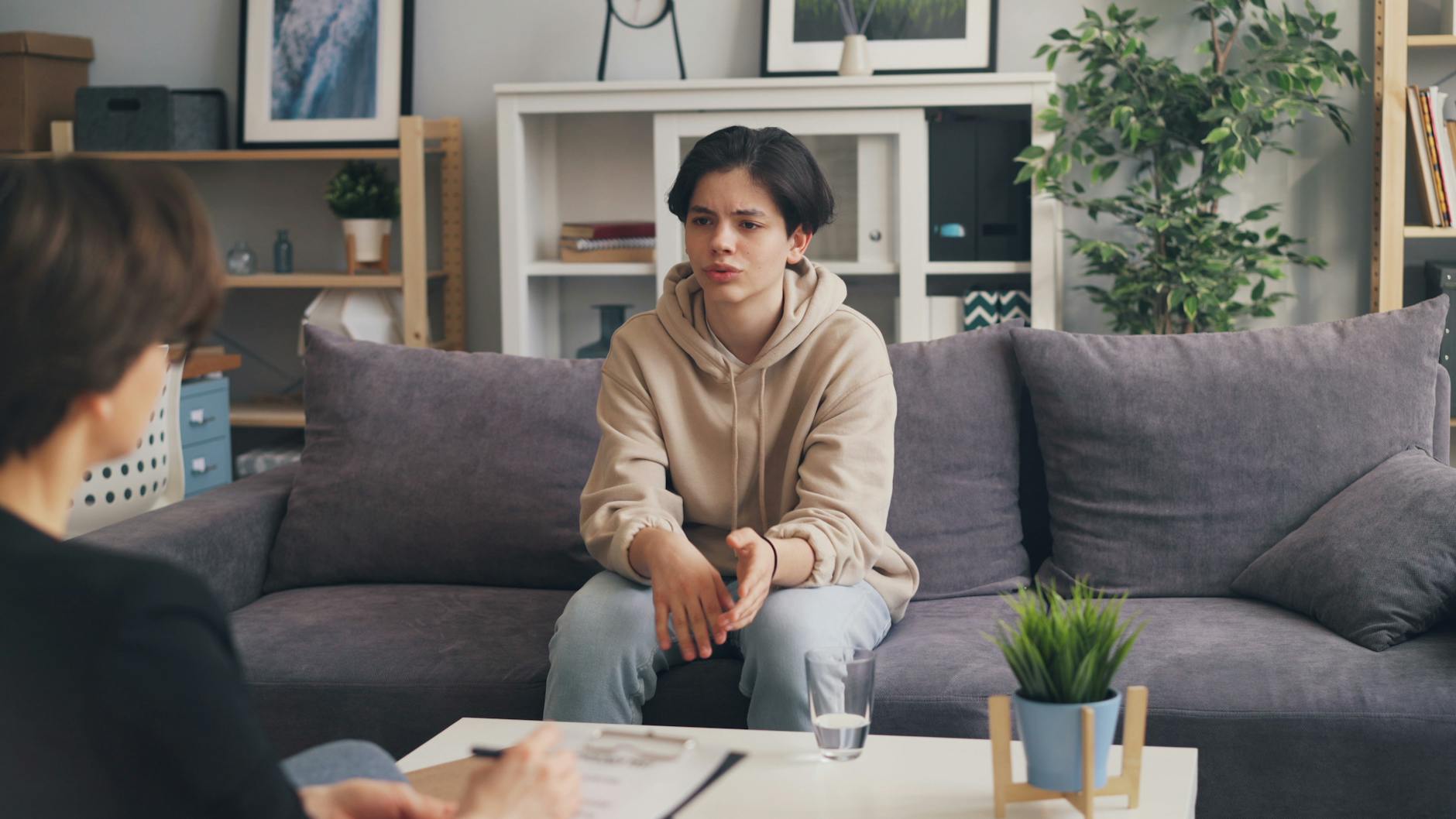Children with disability and/or delay should be involved in setting their own goals
Why it matters:
Including children in goal-setting:
- is consistent with family-centred and client-centred care (best practice);
- increases children’s motivation and engagement in therapy;
- ensures therapy focuses on life activities that are meaningful for families and children; and
- improves outcomes.
Yes, but:
It can be hard to pull off in practice due to:
- time and funding constraints;
- a lack of professional knowledge, skill, and confidence;
- concerns about whether families are sufficiently informed and equipped to identify attainable goals;
- power-imbalances between adults and children;
- limited tools, processes, and workflows; and
- conflicts between parent/carer and child priorities (e.g. between impairment- and participation focused goals).
State of play:
Research suggests we can involve children of all ages and abilities in therapy goal-setting by:
- allocating time to talk to children about goals;
- giving children and families information about the purpose of goal-setting;
- communicating directly with children, and encouraging them to share their perspectives;
- using visuals, scaffolds, and assistive technology when needed;
- acknowledging children’s goals may differ from parent goals, and negotiating between them respectfully; and
- working with children and families to co-construct goals, with therapist input on how to break down long-term goals into achievable short-term goals and steps.
Level up:
To skill up and encourage children to set their own goals, allied health professionals should consider:
- evidence-informed frameworks like ENGAGE, DECIDE, and the F- Framework (see below);
- established tools, like the Paediatric Activity Card Sort, the Perceived Self-Efficacy Goal-Setting System, the Canadian Occupational Performance Measure, and Goal Attainment Scale; and
- using a simple sentence completion tool with a picture of the child with the sentence: “I would like to be able to _______ at the end of therapy so I can _______ .”
Go deeper:
Pritchard, L., Phelan, S., McKillop, A., & Andersen, J. (2020). Child, parent, and clinician experiences with a child-driven goal setting approach in paediatric rehabilitation. Disability and Rehabilitation, 44(7), 1042–1049. https://doi.org/10.1080/09638288.2020.1788178 (Abstract only)
Ryan, A. K., Miller, L., Rose, T. A., & Johnston, L. M. (2024). Optimal child-led goal setting practices for school-aged children with a disability or delay: an international Delphi consensus study. Disability and Rehabilitation, 1–9. https://doi.org/10.1080/09638288.2024.2419430 (Open Access)
Related articles and resources:
Focusing Speech Therapy on Functional Outcomes: A Refresher
F-Framework discussion and conversation starters for younger school-aged children
Functional Communication Probes for Young School-Aged Children
This article also appears in a recent issue of Banter Booster, our weekly round up of the best speech pathology ideas and practice tips for busy speech pathologists, speech pathology students and others.
Sign up to receive Banter Booster in your inbox each week:

Hi there, I’m David Kinnane.
Principal Speech Pathologist, Banter Speech & Language
Our talented team of certified practising speech pathologists provide unhurried, personalised and evidence-based speech pathology care to children and adults in the Inner West of Sydney and beyond, both in our clinic and via telehealth.














